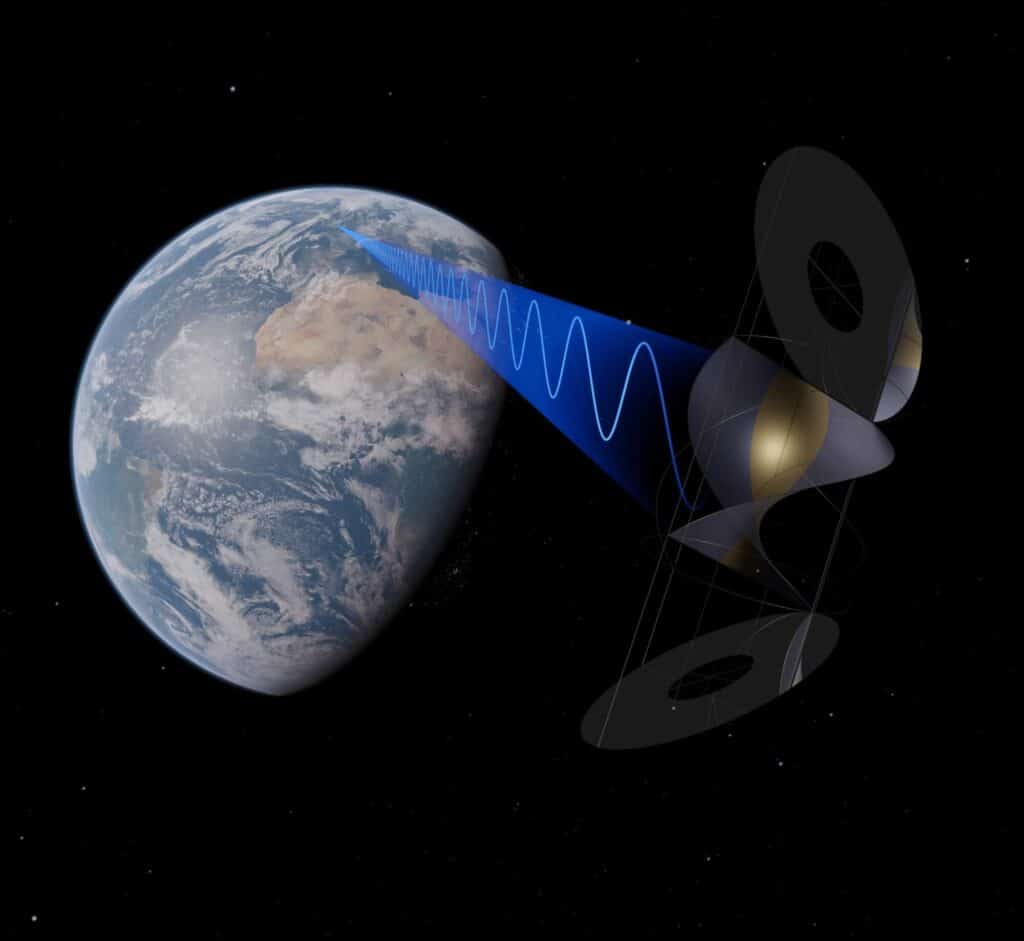Once upon a time, space-based solar energy was seen as the stuff of science fiction, but now governments around the world are reassessing its potential.

Concerns about climate change have led to breakthroughs in satellite technology that harnesses solar power, as reported by the Financial Times.
Wirelessly Beamed to Earth
On the roof of Caltech’s engineering laboratory in Pasadena, USA, a group of researchers set up equipment to test a solar energy satellite.
Ali Hajimiri, a professor of electrical engineering at the California Institute of Technology, led the project. He recounts that at first, they thought they hadn’t detected any signal, but then it began to emerge and strengthen.
The researchers were elated since this was the first time a measurable amount of solar energy had been wirelessly beamed from space to Earth.
Though the amount of energy was barely enough to power a light bulb, it demonstrated that it’s technically feasible to provide our planet with energy from space.
What GPS Did for Navigation
“The sun is the closest thing we have to an infinite energy source. You can create a global energy grid that could potentially provide power anywhere on the planet. Space solar energy could do for power what GPS did for navigation,” says Paul Jaffe to the Financial Times.
He’s an electronics engineer at the US Naval Research Laboratory and has been studying space-based solar energy for 16 years.
Science fiction writer Isaac Asimov was the first to mention solar energy from space in his 1941 short story, “Reason“.
However, it has long been dismissed as too technically challenging and expensive to be commercially viable.
More Potential Than Nuclear Fusion
But as the threat of climate change intensifies the sense of urgency, the space economy evolves and governments worldwide are re-evaluating the potential of solar energy from space.
Many advocates of Space-Based Solar Power (SBSP) believe this technology has greater potential to help the world achieve its net-zero targets than nuclear fusion.
Now, researchers in Europe, Japan, China, the UK, and the USA are examining the feasibility of harnessing space’s solar energy, with plans to potentially conduct space tests before this decade ends.
Caltech’s experiment wasn’t funded by the US government but by billionaire philanthropist Donald Bren. However, the US Air Force Research Laboratory plans a power-beaming demonstrator in low-Earth orbit by 2025.
In the UK, a group of entrepreneurs back a government-supported startup called Space Solar. They aim to construct a gigawatt-scale power plant in space by 2035, scaling up to multiple facilities delivering 30 gigawatts to the national grid by the 2040s.
China’s ZhuRi programme, translated as “chasing the sun”, plans to launch a pilot power plant generating 20 megawatts in orbit by 2035.
How It Works
To harness solar energy from space, solar panels are affixed to a satellite positioned thousands of kilometres above Earth’s surface, where it remains in constant sunlight.
The energy is then converted into microwaves, which are beamed through the atmosphere to a receiving antenna on the ground. This antenna then converts the microwaves back into electricity.
